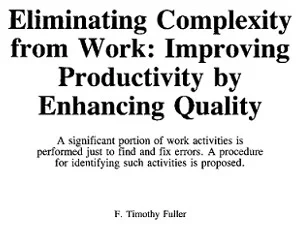How to Solve the E.R. Problem and Avoid the Trap of Rossi’s Iron Law
Ezekial Emanuel offered a hopeful story in The New York Times, 6 May 2015: “How to Solve the E.R. Problem.”
He described the effort of Group Health Cooperative of Puget Sound, working with the SEIU Healthcare NW Health Benefits Trust, to reduce emergency room use of a target population by 27% over four years.
This is an important accomplishment because recent experience suggests that broadening health insurance coverage actually increases expensive emergency room use in the absence of other interventions. There appears to be increased emergency room visits by people now covered under the Affordable Care Act, contrary to expectations stated by some, including President Obama.
For example, Emanuel summarized what happened after Oregon expanded Medicaid coverage in 2008. Per person emergency room visits for the newly insured increased by 40%: “This was most likely because previously uninsured individuals could now go to emergency rooms without owing a co-pay.”
Emanuel then describes the strategy adopted by GHC and SEIU that combined incentives, an increase in co-pay for E.R. visits, education about the difference between urgent care and emergency room care, and information about how to use the GHC urgent care system.
Emanuel then concludes the story: “The good news is that this strategy is not neurosurgery. It is a relatively simple set of interventions that could easily spread to almost every other employer and insurer. This is how we’ll finally deliver on the president’s promise—and save us all billions of dollars.”
There’s good reason to believe that copying the four components of the GHC-SEIU strategy won’t yield the potential billions—a consequence of Peter Rossi’s Iron Law of Evaluation:
I learned about Rossi’s Law from my colleague Gareth Parry, Ph.D., senior scientist at the IHI, who is an expert in what works to spread programs and what doesn’t—the Rossi slide is from one of Gareth’s presentations.
Furthermore, Gareth has outlined a mechanism that explains Rossi’s Law. Take a look at the video clip that mashes together a few more of Gareth’s slides:
(Slides appear in“Recommendations for Evaluation of Health Care Improvement Initiatives”, Gareth J. Parry, PhD; Andrew Carson-Stevens, MBBCh, MPhil; Donna F. Luff, PhD; Marianne E. McPherson, PhD, MS; Donald A. Goldmann, MD, ACADEMIC PEDIATRICS 2013;13:S23–S30)
As Gareth points out on the last slide, we have a way out of the trap of the Iron Law, if we can learn to amend protocols to fit the circumstances of specific organizations, communities, and conditions.
Employers and insurers who are inspired by the GHC-SEIU example will need to adapt the original four components to local conditions to escape the consequences of the Iron Law. The best way we know to adapt a protocol is to run tests, rapidly and efficiently. So, I’d amend Emanuel’s suggestion: Almost every employer and insurer should test and adapt the simple set of interventions, sharing lessons and challenges along the way.
(For more on Rossi’s Law, see recent Health Affairs blog by Gareth and colleagues).















